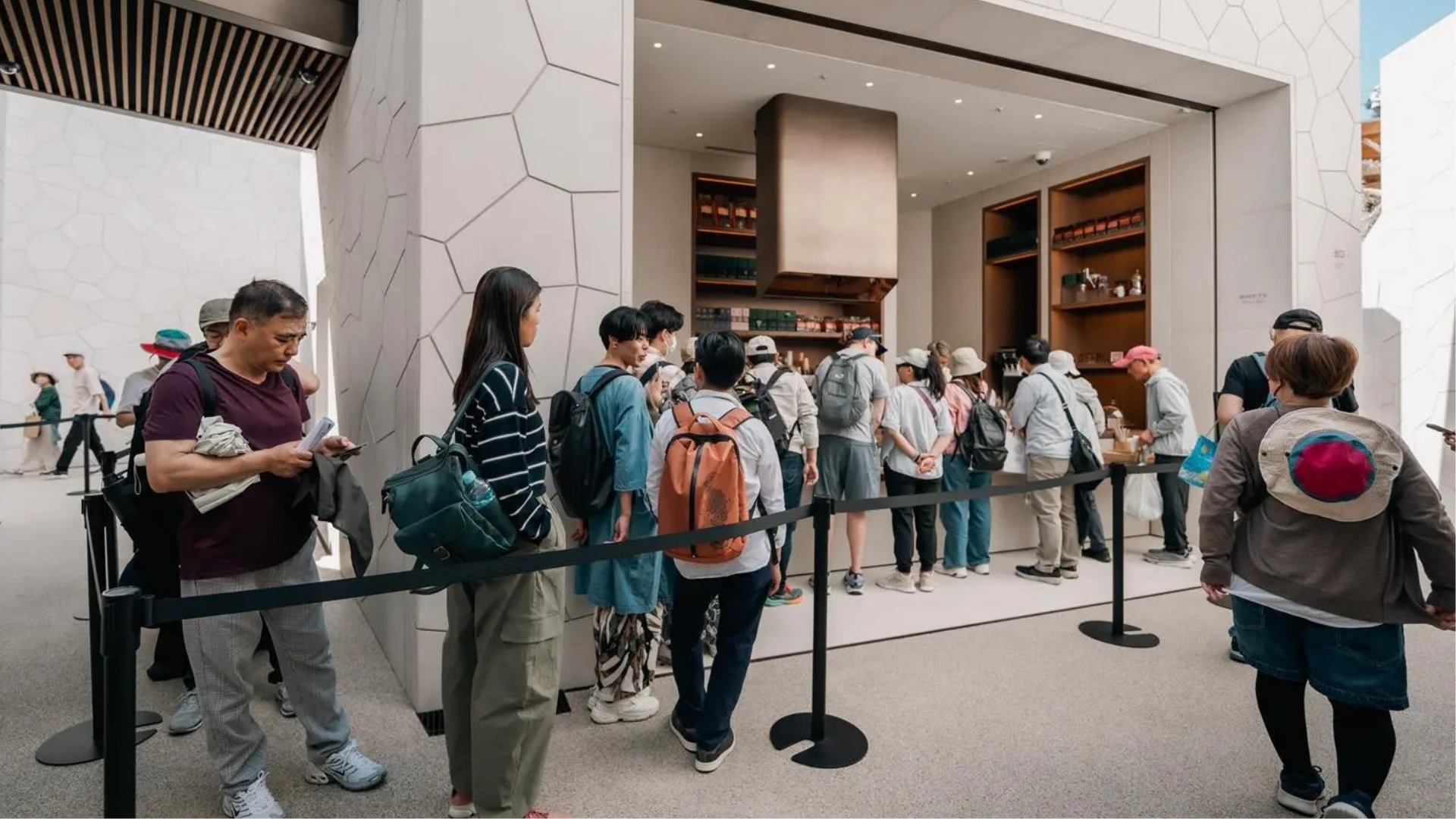Irth Saudi Restaurant and Café sits within the Saudi Pavilion at Expo 2025 Osaka, the second largest national pavilion on site. In its first three months since opening in April 2025, the Pavilion has welcomed nearly 2 million visitors, including 116,000 to its F&B experiences, and hosted more than 700 cultural events.
Irth delivers an immersive hospitality and culinary experience drawn from the five regions of Saudi Arabia, tailored for this six-month global showcase.
As the appointed operator, TGP International led concept development, guest journey mapping, menu direction, supply chain strategy, training and full F&B operations and restaurant operations management in partnership with the Saudi Ministry of Culture.
We spoke with Vinoth Mudaliar, Operations Director (Europe), about what it took to execute Irth in a host country with strict regulations, high visitor volumes and multiple stakeholder requirements.
1. How did the Pavilion’s cultural brief shape the concept and menu for Irth?

The Pavilion brief was clear. Represent the five regions of the Kingdom in a way that was authentic, intelligible to international visitors and operationally viable at Expo scale. That drove every upstream decision.
Menus were built to introduce regional dishes with context. Guests learn origin, ingredients and the cultural role of each dish.
Service begins with Saudi coffee prepared by the Saudi Coffee Master and served in dallahs and finjans. Each guest receives a printed recipe card to extend the experience beyond the table. Both set and à la carte menus support group sharing and time-sensitive dining.
Read Our Full Case Study on Irth Restaurant and Café at Expo 2025 Osaka
2. What did it take to deliver the dual offer of a restaurant and a café?

The restaurant carries the full culinary narrative. The café is the Pavilion exit touchpoint and must move volume fast. It offers Saudi coffee to order, dates, grab and go sandwiches, pastries and sweets that reference regional flavours, plus a retail edit of Saudi brands.
Irth had to function as both a high-volume hospitality offering and a cultural translator for visitors unfamiliar with Saudi food.
Designing both in tandem meant mapping guest flow across the Pavilion so neither space bottlenecked the visitor journey.
3. What were the critical logistical steps to get equipment and ingredients into Japan on time?

We built a shipping matrix early. Kitchen equipment, cold storage, smallware and selected décor moved under controlled timelines tied to Pavilion construction milestones. Food imports required advance documentation to satisfy Japanese customs and Expo food safety rules.
Cold-chain items like Jazean coffee beans and region-specific products were moved under strict handling protocols.
In situations where shelf life or regulation made import impractical, we approved local substitutes. Phased deliveries reduced congestion at site and gave us buffer to test equipment before soft opening.
4. How did you protect flavour authenticity while adapting to sourcing realities and Expo volume?

Core flavour carriers and heritage products were sourced from Saudi producers with supporting certification. Fresh categories with high turnover, such as vegetables and some proteins, were sourced in Japan where standards and availability aligned.
We ranked ingredients by non-negotiable, cultural importance and substitutable.
Halal compliance covered all inputs, not only meat. Certification trails were verified across both Saudi and Japanese channels. Batch prep protocols were written to preserve flavour and texture during high-volume service.
5. Expo operations are complex. Which pre-opening factors were most difficult to solve in country?

Visas for Saudi team members had long lead times. We staged documentation and arrivals. We also needed local hires for compliance and guest-facing communication, so we built a staffing mix that preserved authenticity and enabled service in Japanese and English.
Japanese food service laws are precise. We worked closely with local authorities across permits, inspections and Expo protocols.
Stakeholder tastings in Japan aligned expectations on flavour, portioning and presentation. We also secured warehousing, dry and cold storage and a training space off-site. Accreditation, licensing and Expo compliance required constant coordination.
Language sat under every workstream. We used translators across design, operations, training and inspection phases.
6. Once Irth opened, what day-to-day operational pressures surfaced and how did you manage them?

Executing restaurant operations management at Expo scale required adaptability across multiple service formats. The restaurant includes standard tables, an outdoor terrace and traditional floor seating. Each needed a distinct service rhythm and clear pass points back to the kitchen. We ran service trials before public opening to stress test timing and throughput.
Queue formation was orderly but constant. We used clear signage, guest guidance and batch beverage service to maintain flow. Spare equipment and buffer stock were on hand for high-demand items. VVIP events added layers of protocol and plated service to the regular operating model.
7. How did training support consistency across a mixed Saudi, Japanese and international team?

Visual job aids and translated materials helped reduce service variation across teams.
Training combined brand immersion, regional food knowledge, service sequencing, and bilingual guest engagement.
Saudi front-of-house team members supported cultural storytelling while local staff ensured clear communication and speed. Kitchen operations followed standardised recipes with local ingredient specs.
8.Sustainability and waste were Expo priorities. How were they built into operations?

We worked with eco-certified local suppliers for packaging and disposables. Waste was tracked and sorted under Expo reporting requirements. Reusable service ware was used where practical. Accurate forecasting helped reduce prep waste during low traffic periods.
9. Key lessons you will carry into future international showcases?

Lock menus early. Over-resource accreditation. Capture learnings in playbooks so future showcases can deploy faster.
We saw what worked. Early planning, dual-language service tools and real-time course correction made the difference. Institutional knowledge is now in place to support the next deployment.
-1.png?width=3330&height=698&name=TGP%20International%20Logo%20White%20(1)-1.png)

